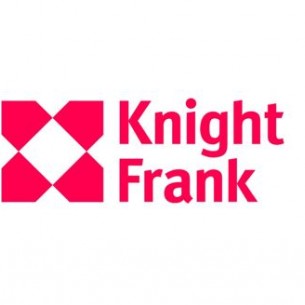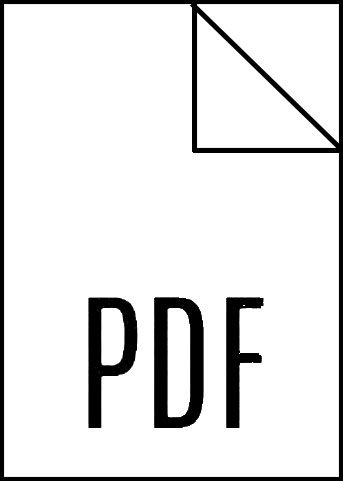Relations presse immobilier
Contact médias : Carol Galivel - 01 41 05 02 02
The luxury sector and new consumer habits are driving Paris retail
Tourism: a solid foundation
Household spending stalled in the first half of 2018. In the second half, however, consumer spending is expected to rise as purchasing power improves. Several significant doubts cloud this scenario. On the national scale, the impact on consumer spending of certain government measures (e.g. reformed housing tax, taxation at source) remains to be fully appreciated. On the international scale, uncertainties stem from a less favourable economy and from higher risks (Brexit, rise in populism, protectionist tensions, etc.). Tourism could be affected because it is strongly correlated to global events. However, even after an exceptional 2017, visitor numbers are on track to break new records in 2018. Tourism continues to increase in Paris, where hotel occupancy rates were up nearly 5% year on year at the end of July as a result of the sharp rise in foreign visitors (+11.4%, compared with –3.9% for French tourists). Moreover, international travel remains robust. Paris airports set new records in July and August, with an annual increase of 4.2% in passenger traffic.
“The momentum in tourism definitely benefits the Paris retail market. As the driver of retailer growth, the rapid development of tourism further justifies the highly focused strategies of investors, whose appetite for the most prestigious locations and the busiest areas of Paris has not diminished”, says Antoine Grignon, Head of Retail at Knight Frank.
Food, sportswear and cosmetics retailers are on the rise
International tourism is not the only driver of the Paris retail market. “Retailer demand is also fed by local consumer spending, especially in food shops and restaurants. Their robustness is apparent in the ongoing expansion of organic food specialists, in neighbourhood shops of large distribution retailers, and in fast food chains such as Prêt à Manger, which recently opened on avenue de l’Opéra and near the Sorbonne", notes Antoine Salmon, Head of Retail Leasing at Knight Frank. Already established in other European and French cities, the phenomenon of food halls is now taking root in Paris. Several projects have taken form and are the driving forces behind individual shopping centres and neighbourhoods. Beaupassage, which at the end of August opened nearly 6,000 m² in the 7th arrondissement, houses several high-end food retailers of the biggest names in French gastronomy, as well as a Carrefour City featuring a large selection of organic and vegan products. Eataly, an innovative chain of Italian prepared food and food products, will open its first French flagship in 2019 in Le Marais. Then in 2020 Food Society will open 5,000 m² in the Ateliers Gaité shopping centre (currently undergoing refurbishment), near the Montparnasse station.
Sectors other than food and restaurants, such as beauty products and cosmetics, are also enjoying momentum. High-end brands have expanded across several neighbourhoods and prime high streets (e.g. Lancôme on the Champs-Elysées, L’Atelier Cologne in Le Marais, Serge Lutens on rue Saint-Honoré). Surfing the boom of athleisure[1] and sportswear, sporting goods retailers are also expanding their networks across Paris, from concepts dedicated to sneakers (Footpatrol in Le Marais, Snipes near Les Halles with its first shop in Paris, etc.) to more general flagships located on leading high streets, such as Nike and its future flagship expected to open in 2019 at 79 avenue des Champs-Elysées. Another sporting goods giant, Décathlon, has already opened a City shop at 104 boulevard Saint-Germain, in the 6th arrondissement. The City concept has been tested on rue du Commerce in the 15th.
New formats are reviving Paris retail
The wide variety of formats developed in the restaurant, beauty products and sporting goods sectors has added to the euphoria of the Paris retail market. It also sheds light on tests carried out by retailers in response to the slowdown of certain traditional formats abandoned by hyperconnected consumers who are disinclined to loyalty. “The slowdown could inspire retailers to step up openings and closings, in both secondary locations and established high streets. Nonetheless, new expectations of consumers, combined with digital technology, provide exceptional opportunities. New retailers can use these opportunities to break into markets and raise their profile, while established retailers can use them to update their product offer. Such transformations also serve to breathe new life into Paris retail and to modernise shops and stores”, states Antoine Salmon.
Three formats are especially visible in Paris streets:
- Urban concepts already established on the outskirts, whose success parallels the growth of large interior décor and household goods retailers. After Leroy-Merlin at La Madeleine this summer, and ahead of IKEA in the same neighbourhood next year, Boulanger is expanding elsewhere in Paris. By taking over the former Darty stores and opening corners in BHV and Galeries Lafayette, Boulanger has embraced a trendy format in the retail world: retailers regrouping their efforts, and shop-in-shops.
- “Brand stores” are still popular for cosmetics, sportswear (Fusalp, Salomon, Rossignol, etc.), luggage (Tumi, Samsonite, Bande à Part, etc.) and high-tech products. In July, Samsung opened a showroom on the Champs-Elysées. Xiaomi, a giant Chinese newcomer in telephony, electronics and connected objects, plans to open a new store soon, in addition to its existing stores on boulevard de Sébastopol and in the Vélizy 2 shopping centre.
- Boutiques of internet pure-players, which are moving into brick-and-mortar commerce and continue to roll out new consumer contact points. Others will follow, starting with the opening on rue Sainte-Croix de la Bretonnerie of the first-ever Tediber (mattress specialist) store, following a handful of pop-up stores opened last year.
Analysis of Paris neighbourhoods
The most high-profile openings continue to be concentrated around a small number of districts and high streets.
On the Left Bank shopping centres tend to dominate the headlines, with the confirmation of the arrival of Galeries Lafayette’s 8,000 m² in Beaugrenelle, the launch of refurbishment and expansion work in the Italie 2 (“Italik”) shopping centre, and the progress of construction and lettings in Ateliers Gaité and retailers in the Montparnasse station.
But it is on the Right Bank where the ground-floor retail market is liveliest. In Le Marais, the opening of a new & Other Stories, an H&M Group retailer, at 76 bis rue Vieille-du-Temple marks the beginning of a new phase in its growth in Paris. The size of the new flagship (900 m²) is rather unusual in a neighbourhood where there are few large properties available. Eataly is another major arrival in 2019. With its 2,400 m² of retail space, the Italian speciality food shop will boost foot traffic in rue Sainte-Croix de la Bretonnerie. “The success of Le Marais reflects the larger success of the Right Bank in general. The opening of new flagships in Le Marais reinforces not only the renaissance of the Etienne Marcel / Place des Victoires district, but also adds to the transformations under way all along the rue de Rivoli, where the colossal work on the Samaritaine follows its course. Ultimately this serves to further connect the various shopping districts of the Right Bank”, explains Antoine Salmon. Other projects could contribute to this unification, such as those dedicated to art. After the Pinault Foundation in the Bourse de Commerce, it is now the turn of the Cartier Foundation to announce its arrival in the heart of Paris, in the former Louvre des Antiquaires.
As for the Champs-Elysées, business is booming. Nearly 25 openings and deals have taken place there in the past three years. Though the pace may have slowed slightly in 2018 – Samsung is one of the most recent arrivals – numerous flagship openings are planned for 2019 (Apple, Nike, Galeries Lafayette, Chanel, Lancôme, etc.). “Restructuring deals are common on the Champs-Elysées, and several have already been absorbed. This reinforces the success of the avenue, which is increasingly dedicated to flagships and to luxury goods. In addition to several stars in the luxury retail world (e.g. Louis Vuitton, Cartier and Tiffany & Co), a prestigious brand has announced its decision to open a spectacular store of 2,000 m² at no.127 in the spring of 2019", says Antoine Salmon.
An exciting year for luxury goods
The luxury sector is also active on rue Saint-Honoré, as seen in the recent opening by LVMH of a Pucci store (for 12 months only; afterwards Christian Louboutin will move in definitively). This follows last year’s Dior pop-up, which is still open. The street is targeted by most of the sector’s biggest names, with flagships under way for Chanel, Saint Laurent, Buccellati and Graff. “After nearly 25 luxury openings between 2015 and 2017, 17 are currently planned for 2018 and 2019 on rue Saint-Honoré. This figure represents one-third of all openings planned for Paris, confirmation of the success of a street now firmly established in the hierarchy of Parisian luxury”, explains Antoine Salmon.
The euphoria of the rue Saint-Honoré has contributed directly to the rise in the number of openings of luxury shops in Paris. After 26 openings in 2017, more than 40 are planned for Paris in 2018, in an especially favourable context for the sector (excellent results of large groups, rapid development of international tourism, etc.). The breakdown of openings to come highlights other changes in the geography of Parisian luxury, although where possible stability is preferred. Thus the Golden Triangle – where up-market hotels continue to expand with the opening of the future Bulgari hotel on avenue George V – is the focus of the most prestigious brands. The Montaigne and François 1er submarkets will benefit from opportunities related to large restructuring deals (former Canadian Embassy, former Europe 1 building). Vacated assets and development projects of new flagships also lie at the origin of the upmarket trend of the Champs-Elysées. Other high streets are quieter, such as the rue du Faubourg Saint-Honoré, whose prime sector continues to narrow to the district between the Maison Hermès and the rue Royale. The expansionary move of luxury towards other neighbourhoods traditionally less upscale – a trend observed between 2010 and 2015 in Le Marais and the Left Bank – seems to have subsided.
“The excitement of the Paris luxury market does not result in a widespread rise of rental values, which occasionally rise on a few high streets. Similar to what is happening in other market segments, rental values can also experience downward pressure on certain high streets because of retailers’ cost-cutting strategies and their growing demand for profitability”, concludes Antoine Salmon.
Retail: the year of the high street
Almost 600 million euros were invested in French retail during Q3 2018, taking the 2018 total to date to 2.2 billion euros. This total equates to 14% of French corporate real estate investment activity and reflects an increase of 11% compared to the same period last year. “Whilst volumes have increased, it is due to the completion of the sale of the future Apple Store on the Champs Elysées to Hines during the 2nd quarter. The concentration of activity in a few major transactions is moreover one of the main characteristics of 2018, with five transactions of more than 100 million euros which alone account for 48% of retail investment volumes” notes Antoine Grignon, Head of Retail at Knight Frank France.
During the 3rd quarter, the sale of “65 Croisette” in Cannes by THOR EQUITIES was added to the four large deals of the first half of the year, confirming the domination of high streets. “High street assets remain sought-after by investors. Over the first nine months of 2018, investment volumes in this asset class totalled 1.25 billion euros, which is 58% of all French retail investment” continues Antoine Grignon. Investors continue to particularly target the most renowned retail pitches. Besides La Croisette in Cannes, rue Saint-Honoré in Paris also stands out. Following the acquisition of the new MOSHINO shop by GENERALI, several other large deals are ongoing on this ever more upmarket street.
Retail parks account for 26 % of French retail investment volumes since the start of 2018, equating to a total of 560 million euros, a decrease of 17 % year-on-year. This performance, however, is still respectable and was driven by the completion of brand and retail park unit portfolio sales of varying sizes. Retail park acquisitions remain few in number due to a limited structural supply of latest generation assets that struggles to satisfy the large appetite of investors. Finally, the shopping centre market has been almost flat, with investment volumes of close to 350 million euros which is 16% of French retail investment volumes. Since the sale of “Grand Vitrolles” to CARMILA at the beginning of the year, deals can almost be counted on one hand; a tightening of the market which illustrates the lack of flagship shopping centres available for sale, and the lack of investors’ visibility as to the future of less prime assets.
“Upcoming sales of Parisian flagships, the expected completion of a MONOPRIX portfolio sale by CASINO and a few other large ongoing deals lead us to anticipate a much more active 4th quarter. However, 2018 performance levels will probably not reach those seen in the last 5 years (5.4 billion euros invested on average between 2014 and 2017 in the retail market)” concludes Antoine Grignon.
[1]Contraction of athletic and leisure to describe a trend promoting a healthier lifestyle which combines style and comfort.



